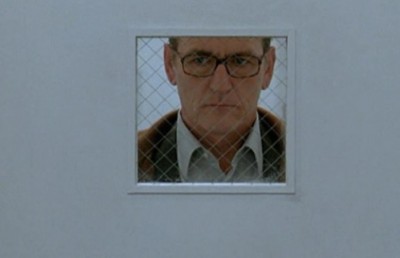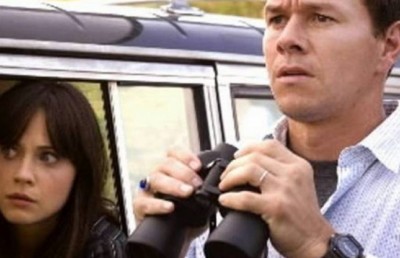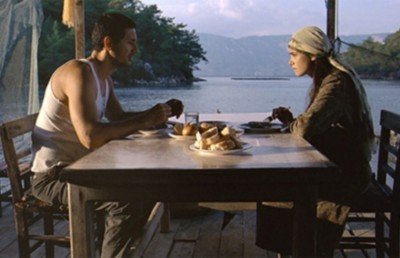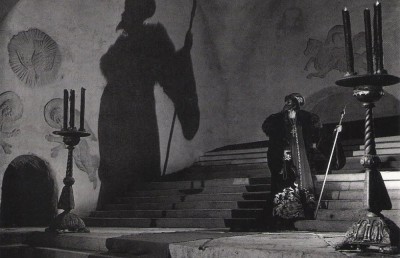From Cop Killer to Killer Cop: Black Masculinities in Jamaican Cinema
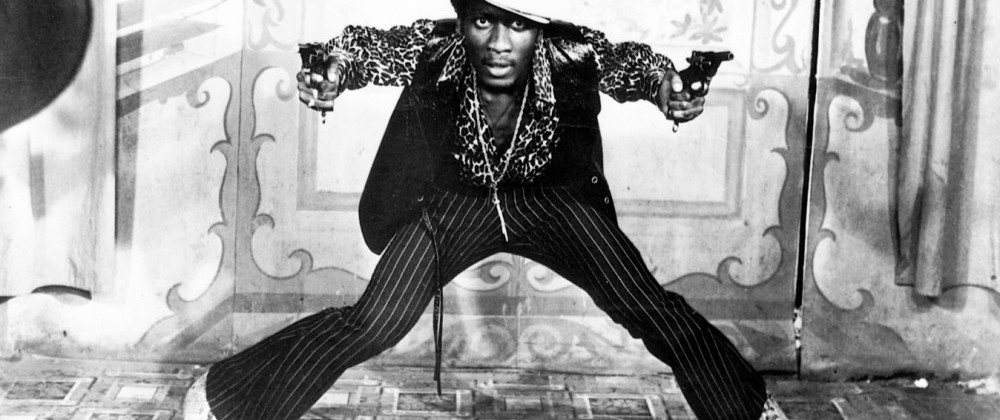
Through the Jamaican films The Harder They Come (Perry Henzell, 1973), Rockers (Theodorus Bafaloukous, 1979) and Third World Cop (Chris Browne, 1999) I will discuss the evolution of black masculinities that are tied to Rasta Culture, roots/reggae and ghetto life in Kingston Jamaica, ranging from the early 1970s through the late 1990s. I will show how these three films trace the political and socio-economic climate of the Kingston Metropolitan Area, using black masculine archetypes specific to Jamaican folk culture: the Rudie, the Rhygin, and the Gunman. Chronologically, my essay will show how these black masculinities have been constructed as violent/dangerous through the cop-killer ‘Rudie’ in The Harder They Come, through the ‘Rhygin’ in Rockers, and the killer-cop ‘Gunman’ in Third World Cop. All three films have similarities with their small-scale production (the first two were shot on 16mm and the third on video), emphasis on music, culture and community; the narrative function of music; self-reflexivity and focus on culturally specific violence directly related to the extreme poverty of Kingston’s ghettos or, shantytowns. I will trace a shift in masculinities that echoes the shift from neo-colonialism to social democracy and back again; from roots to reggae to dancehall; from the country to the city to the slums; from glorified gunslingers to collective rebellion to gun-toting gangsters and the vigilante cop. The evolution of the Rasta is also traced through the music of three films, with the early roots/reggae hero in The Harder They Come, the diversity of both the political and religious Rastas in Rockers, and the presence of roots/reggae influenced “voicin’ over riddims” and dancehall in Third World Cop. Using Gladstone Yearwood’s critical approach to black cinema, I will show how the use of hybridized music (roots/reggae/voicin’ over riddims) and film genres (musical/action/gangster/blaxploitation), together with gender and racial performativity, construct different modern black masculinities within these three Jamaican films that parallel socio-political and economic movements in post-colonial Jamaica.
While two of the three films feature criminal-musicians struggling to survive in Kingston’s small and insular music industry, and in the ghetto, all three films are critical of neo-colonialism and local capitalism. They paint a bleak picture of class-race stratification in Kingston; they problematize religion and tradition within Jamaican culture. All three films touch on issues of race, gender and class; they are political without being overly didactic, and are thoroughly entertaining. Politicization within these films evolves matching the political violence, harsh economic crisis, and globalization over the past 40 years. Punctuating the work of Black Cinema, Yearwood sets out a critical framework for approaching black cinema as a signifying practice. He asserts, this critical approach informs the work of black cinema, it foregrounds a cultural framework that “has its own autonomous systems of values, behavior, attitudes, sentiments, and beliefs” (Lardner quoted in Yearwood, 80), which positions the black experience as an integral mechanism that blacks use to negotiate their day-to-day lives (Yearwood, 2). Within the three Jamaican films it is clear that culture functions as a point of power, a point Yearwood highlights, as the main work of black cinema (3). Yearwood uses the term black cinema to describe, “a specific body of films produced in the African Diaspora which shares a common problematic.” (5). He posits that when this “blackness” is assigned particular characteristics and given symbolic meaning, the work of building a shared diasporic experience of blackness is demonstrated across cultural and national boundaries (Yearwood, 5).
The first film, chronologically, is Perry Henzell’s 1973 film The Harder They Come. The film was shot in Kingston Jamaica during 1971. Henzell was a ‘native’ (white) Jamaican, the film was financed by Roger Corman’s B-Movie studio and its North American release coincided with the release of other ‘blaxploitation’ films, notably Shaft (also in 1973). Part of its box office success is believed to be indebted to popularity of “blaxploitation”—1971 through 1975 (Briggs, 26). Joe Bob Briggs explains that blaxploitation substitutes black actors while it “leaves the revolution out,” in other words erasing any signifiers of black culture, politics, or lived experience while otherwise leaving its genre intact (26). During the early 1970s there were reportedly over two hundred blaxploitation films produced in North America, eighty percent of which were written and directed by white men (Briggs, 27). However, the character “Shaft” is likeable to Briggs precisely because Shaft was a black guy that did not care about race; that “Shaft was not really a hero, just a tough guy who does what he wants” (29). Briggs asserts that rather than lumping all films with black actors into the category or ‘blaxploitation,’ characters such as Shaft ought to be recognized for being a black character in the mainstream which refuses to treat him as a hero role model, or victim, and refuses to treat him as black” (29). Alternately, Deborah Thomas asserts that the popularity of the Rudie/Rude Boy character such as in The Harder They Come was indebted in part to blaxploitation, but also to the spaghetti western (39).
At the beginning of The Harder They Come a scene in Kingston’s Rialto movie theatre cuts between close ups of the black audience excitedly watching a spaghetti western and the film-with-in the film. During this sequence, while we see images from the spaghetti western off-screen voices from the audience are heard saying, “You think the hero can dead ‘til the last reel?” Indeed, at the end of the narrative the Ivan O. Martin character (played by Jimmy Cliff) has his own shoot out, reminiscent of the shoot-out at the beginning of the film-within-a-film. During this final shoot out, the non-diegetic audience noises and commentary are repeated over shots of Ivan hiding behind a tree and then walking out with his guns blazing, only to be shot by the army. The influence of the spaghetti western is obvious, though the film is not itself a spaghetti western. Likewise, the influence of blaxploitation is present through the Rudie character, though The Harder They Come does not belong within the blaxploitation category because of its focus on day-to-day negotiations of a black lived experience, attitudes and values specific to a black Jamaican identity and culture.
Contrary to the rules of blaxploitation, all three of these Jamaican films feature diverse and complex characters who are culturally specific, and embody Jamaica’s National motto, “Out of many, One”. Thomas suggests that the Rudie phenomenon during the 1960s and 1970s captured the imagination of young, poor black Jamaicans because Rudies, “challenged middle-class politics of respectability but in a drastically different political-economic context and, therefore, with different results.” (39). The Harder They Come highlights certain aspects of Rasta culture, primarily through the use of music, dance, ganja trade and the rejection of “Babylon’s” ideas of progress. Babylon refers to a variety of corrupt apparatuses of power: the establishment, police and even technology (King, 45). Prior to the multidimensional representations of Rasta culture in Rockers, the Rudie presented black youth with a violent and rebellious, autonomous individual whose “only way out was via bullet or hit single!” (Clark, 242). Ivan O is the consummate Rudie. He is oppressed, by both class and race, struggling to make it as a musician but turning to ganja trade when his hit record earns him all of twenty dollars. The Harder They Come balances the glorification of this violent masculinity by problematizing Ivan, showing that simultaneously becoming a cop-killer outlaw with a song at the top of the charts does not afford Ivan a “way out”. Rather, the film ends with Ivan achieving a hit single and receiving a rain of bullets. Like “Shaft,” Ivan is not really a hero, nor is he a victim.
In 1972, Michael Manley’s PNP (People’s National Party) [1] victory promised a shift away from the neo-colonial, repressive government of the JLP (Jamaican Labor Party), which had been backed by the CIA and the United States government since Jamaica’s independence in 1962; Manley promised the redistribution of land and wealth, and independence from foreign control (King, 39-42). Ivan O reflects the values and concerns of roots (1968-1971) and early reggae, which include awareness of international issues, such as the American Civil rights movement and the “Back to Africa” campaign, as well as, the expression of historical experiences of the Jamaican working class and unemployed peasants, particularly the experience of urban migrants (King, 39-40). Between 1960 and 1970 Kingston became home to over 130, 000 new residents (Clark, 187). Ivan O is an urban migrant. In the beginning of the film he is shown traveling from the country to Kingston to find work, with dreams of recording a hit song. Ivan settles in the slums, which is coded as a violent area, in the song “007 Shanty Town,” with its lyrics,
Dem a loot, dem a shoot, dem a wail.
A Shanty Town
Dem rudeboys get a probation
A Shanty Town
And rudeboy bomb up the town
A Shanty Town
Since the 1960s the colonial slums have evolved into the post-independence ghetto—officially termed “the zone of deprivation”—and this zone has doubled in size between 1960 and 1990 (Clark, 203).
During the 5 years between the production of The Harder They Come and Rockers, the political climate of Jamaica had steadily grown worse. An oil crisis in 1973 crippled the economy, Manley had to call a state of emergency that lasted one year after one of Jamaica’s bloodiest political elections in 1976; by May of 1976 more than 100 people had been killed by politically motivated violence and by April 1977 the country was in shambles (King, 42-43). The 1970s under Manley saw a severe decline in living conditions, worse unemployment and shortages of basic goods (King, 43). The stark contrast between the rich and the poor in Rockers reflects the socio-economic divide of Kingston in the late 1970s. All three films take place in Kingston’s ghetto, with characters occasionally traveling to the country or into upper-class areas, providing a substantial classed and raced contrast in relation to the standard of living in the ghetto.
While roots/reggae are an integral part of Rasta culture, Ivan O is never specifically coded as Rasta. It is important to note that while roots and reggae are closely tied to Jamaican Culture and associated with Rastafarianism, in fact nondenominational Protestants and Catholics continue to make up more than half of the Jamaica’s population (Clark, 114). According to the 1991 census, Rastafarianism has only grown marginally from 0.18% in 1960 to 0.63% in 1990 (Clark, 115). It was only in the late 1970’s that dreadlocks (and reggae music) became synonymous with Rastafarianism (King, 52). The characters in The Harder They Come that wear their hair in dreadlocks are limited to young Rupert, Pedro’s son, and Pedro, as well as a few of the other ganja traders. In contrast, the characters in Rockers are clearly coded as Rasta: sporting dreadlocks, shown smoking ganja while drumming and chanting, and speaking to each other primarily in Patois. The characters are representative of the diversity within Rasta Culture.
There is a schism between political Rastas and religious Rastas that is attributed to Haile Selaisse’s 1966 visit to Jamaica, when he announced the need for Jamaican political reform before African repatriation (King, 51). Prior to this split, as early as the 1930’s there were four Rastafarian groups in Jamaica. All four groups condemned colonial society, believed that repatriation to Africa was key in overcoming oppression. They advocated non-violence, reflected a history of diversification, as well as, a lack of centralized leadership (King, 50). According to King, by the 1970s Rastas were primarily concerned with the prevalence of individualism and believed that imperialistic capitalism was responsible for African slave trade and massive poverty (51). Rastafarians believe the emperor of Ethiopia in the 1930s was the black messiah. His name was Ras Tafari, or Haile Selaisse I “King of Kings, Lord of Lords, Conquering Lion of the Tribe of Judah, and Elect of God and light of the World” (King, 30). Rastafarian is a considered a cult, they are monotheistic and unlike “organized” religions, they have healers but no preachers, churches nor religious rituals—aside from drumming, chanting and smoking ganja. While the religious Rastas abstain from politics, Political Rastas believe that direct engagement with Jamaican politics would “provide authority and power to improve living conditions” (King, 51). Many different Rastas, including both political and religious Rastas, are represented in Rockers.
The opening scene of Rockers is shot using one long take and a static camera, the characters exceed the frame—there are a dozen or so Rastas engaging in the traditional Rasta custom of drumming, chanting and smoking in a hut (they comprise the musical group called The Abyssinians). In this opening scene there is no use of editing or close-ups, they are shown as a whole, a collective, the members are not individualized. Finally, from the far left of the frame, a man who has been only half in the shot walks forward and center where he addresses the audience, looking directly into the camera. He speaks in Patois, his greeting exemplifies Rasta values of love, peace and cooperation:
Greetings and love, to one and all. In I presence I bring coverage of I heights. Love for everyone everywhere. It is known that cooperation of all colors of people voice the decisions of I-heights. Free everyone—liberate fully everywhere. Now everyone just cooperate with love of I-heights to survive. Knowing that in this world war is explosive. The ways of the One solve the problem in the heights of coverage in full. So it is I-rey. Love full heights.
The main character, Horsemouth, is representative of the Rhygin character of Jamaican oral tradition. The Rhygin is considered to be spirited, lively and passionate. Horsemouth is a complex character, he is a Rhygin Rasta. He is concerned with Jamaican liberation from Babylon and culture. For Horsemouth, Culture (here meaning roots values) is the most highly respected tradition of Rasta. Though Rasta tradition is non-violent, Horsemouth consistently refers to himself as “I-man vex.” [2] At one point Horsemouth addresses the camera saying, “If not for that likkle daughta I-man mash up [3] the baldhead [4] brother. I and I don’t deal with violence. I and I is peaceful Rasta man. I don’t steal, cheat, I-man serve Selaisse-I continually.” He continues to denounce Babylon, warning that “not even the dog that piss on the wall of Babylon” will escape judgment and that Babylon will fall. There is minimal violence in Rockers, though Horsemouth lies to his friends saying that whoever stole his bike roughed him up. Therefore, the group has no problem pulling together a mash up on the bad guy character: Honiball. They also mash up the guards and use guns to raid the warehouse. Likewise, he professes that he does not cheat, yet throughout the narrative he is repeatedly hitting on a young, rich Rasta girl named “Sunshine” whose father owns the upper-class club where he works as a drummer in the house band. Nonetheless, Horsemouth is married and has three children living in the ghetto.
After his motorbike and records are stolen at a party that is raided by the police, Horsemouth walks home on foot, stopping on the way to visit his friend Burning Spear (all the musician play themselves in Rockers). Sitting on the steps that lead down to the quay, they smoke ganja and Burning Spear sings a roots song, “and they tried to fool the black population by telling them that Jah, Jah ain’t. Jah know, Jah know day.” When he returns home, it becomes clear that while Horsemouth calls himself Rasta, and holds many political Rasta beliefs, his actions are often contradictory. There are four scenes where Horsemouth is shown in his home, interacting with his wife and ignoring his three children. In the first three scenes, he comes home tired but once he gets to arguing with his wife about money and finding work, he simply changes his clothes and leaves. While Horsemouth is concerned with making money and playing music, he purports that money is not what his family needs—despite his wife’s complaints that there is no food for the children. During the second of the four scenes, the wife asks him, “what about the youth?” to which he retorts, “I-man youth I-rey. Jah will always provide for everyone. Just Culture me a teach them. Pure vanity, clothes, food, house, money. It’s all them care about. Me’s a man who come like a messenger. Come to carry Jah works out there. Culture. I no want them robbed from that. Satta, man”. As he leaves his home again, the lyrics of the music are, “Rich is getting richer everyday. The poor got to take it away. Do you hear what I say?” and this is precisely what happens in Rockers. The narrative revolves around Horsemouth and his sidekick Dirty Harry organizing a take back, getting their Rasta friends together to work collectively against Babylon and the evil local capitalist. Originally they make a plan to get the Horsemouth’s bike back from the warehouse where it is being stored, but upon discovering all the goods in the warehouse they plan for as many trucks as they can get and arrange to liquidate the warehouse in the middle of the night and then distribute the goods in the ghetto. The fourth time Horsemouth goes home, is the final scene of the film, after the long night of robbing the rich to give to the poor. As the neighborhood wakes up to find these “gifts,” Horsemouth returns home and finally sleeps.
Unlike Ivan O, Rockers presents Horsemouth as a working studio musician. On the other hand, Horsemouth is similar to Ivan, in that a working musician in Kingston is not a financially lucrative profession. Both films address the Kingston music industry, reflecting real problems of local capitalism and the corrupt nature of the studios and sound systems. During the 1960s there was a dramatic increase in small-scale production of records, 50-100 vinyl singles would be produced for a single sound system and larger pressings were done for public purchase (Manuel & Marshall, 463-464). Manuel and Marshall explain how records tended to be identified by their producers and the sound systems that played the records, rather than with artist. Musicians cut records for a flat fee; in The Harder They Come Ivan O cuts his hit single and earns a measly twenty dollars. In Rockers Horsemouth is hired to play as a drummer in a Reggae band at an upscale club, earning twenty dollars a week to play three-one hour shows. To this day Jamaican musicians work for hire (Manuel & Mashall, 463). As it is shown in both The Harder They Come and Rockers, producers earn money from direct sales of records, completely controlling which albums, singles and artists are played (Manuel & Marshall, 463-464). In both films, Ivan O and Horsemouth come up with the idea of acquiring a bicycle, or motorbike, to distribute small lots of records directly from the producers to the sound systems. In Rockers, Horsemouth earns twenty-five cents per record sold. Musicians earn a pittance recording and have to find extra work to earn a living. Ivan O dreams of starting up his own studio, and becoming an independent producer, whereas Horsemouth dreams of becoming the go-to man for record distribution purporting that he is the “hardest salesman around town”. Neither succeeds at breaking into the insular industry and turn to ganja trade for extra money.
Ivan O’s dreams are complicated when his coworker steals the bicycle that he has spent three weeks fixing up from a useless frame. Ivan stabs his rival with a knife in a mash up, admonishing “Don’t Fuck With Me!” In a montage sequence Ivan is arrested, put on trial and is shown being whipped over a barrel. With the use of non-diegetic sound, the judge says, “You have had every chance to make a good Christian life, but you’ve filled your head with foolishness and violence, this is your chance to come to your senses.” The crude punishment is highlighted as violently inhumane, ending with a close-up shot of urine running out the side of the barrel as Ivan O is whipped. The brutal violence enacted upon this black body underscores themes of oppression, degradation and humiliation, that dates back to Jamaica’s colonial history. Following the whipping montage, Ivan is shown recording his future hit (the title song) “The Harder They Come.” The lyrics that underline the scene—which is Ivan O’s turning point—are:
The tell me of a pie up in the sky,
waiting for me when I die.
But between the day you’re born
and when you die,
they never even seem to hear your cry.
So as sure as the sun will shine,
I’m gonna get my share,
what’s mine.
The harder they come,
The harder they fall.
One and all.
Music serves a dual function within the narratives, as music is at the center of two of the three films (The Harder They Come and Rockers), and is portrayed as a positive alternative to thug life and the cohesive force that keeps the working-class, black Jamaican community together in Third World Cop. The first two films center on a vexed musician looking for retribution—oddly, both the characters Ivan O. and Horsemouth are spurred into action after their bike is stolen, a la The Bicycle Thief. The music in these three films is topical, as in the musical genre, pushing the narrative forward as a sort of narration. For instance, at the beginning of The Harder They Come, Ivan O. is traveling from the country to the city on the bus. Using music and montage the lyrics of “Draw Your Brakes” warn, “Stop that train, I wanna get off” unfortunately for Ivan O, this is only the beginning. Later, when Ivan O has found work as a mechanic for preacher, his coworker comments on his get-up, and in another montage sequence Ivan is shown around town acting the part of Rudie, even having his portrait taken as gun-toting outlaw, the song is “Johnny Too Bad”:
Walking down the road
With an old blade in your hand,
Johnny too bad, that’s what they say.
Walking down the road
With a blade in your waist,
Johnny too bad, Johnny too bad.
Don’t you play come faking,
you’re looking and mistaking,
too bad.
You’re hurrying and you’re shooting,
you’re losing, told you,
you’re too bad.
Likewise, in Rockers during the montage in which all the musicians band together for some Rasta retribution and redistribution of the topical song “Stepping Razor” resounds:
If you are a bully,
treat me good.
I’m like a stepping razor.
Watch my size,
I’m dangerous.
Third World Cop also utilizes topical music to underscore the narrative. However, one striking difference is the use of voicin’ over riddims, as opposed to reggae or roots music. Voicin’ over riddims and dancehall of the 1980’s evolved out of the practice of DJs, at street parties and in dancehalls, shouting into the mic while playing songs (Manuel & Marshall, 450). Dancehall took off in the 1980s (Cohen, 18). The lyrics are primarily in Patois, which is a striking difference from the music of the first two films. According to Aaron Cohen, the tempos are fast and the vocal delivery is primarily shouted, rather than sung. Cohen explains that critics chastise the genre for its glorification of violence and sexism (19). The veteran duo Sly and Robbie provide the score for the film Third World Cop, often using synth and digital effects with acoustic instruments and drums (Manley & Marshall, 455). In addition to the distinct score, there is an element of live music present in the film. Different from the live music of the first two films, the live music in Third World Cop is voicin’ over riddim and is shown in the dancehall setting. Regardless, music and dancehall is marginal to the narrative. The neo-Rudie character Ratty works for a drug don, importing and exporting cocaine and guns in barrels. The barrels are delivered to and from churches in Kingston, implicating religion as part of the problem, not the solution. The vigilante cop, Capone, works with Ratty as an informer and urges Ratty to get out of thug life and organize shows in the dancehalls.
Colin Clark suggests that the 1970s saw politicians using their influence with the police to provide cover for Jamaican gangs. (218). Clark asserts that guns replaced machetes and knives as weapon of choice during the mass violence in 1966 that lead to a state of emergency (211). During the 1980s the Jamaican government, with U.S. support, began ganja trade eradication programs. Unfortunately, to fill the void Kingston became the center of the crack-cocaine trade, as the link between Columbia and the United States (Clark, 219). According to Clark, with the multi-million dollar drug trafficking network in Jamaica came a wider availability of guns (220). The prevalence of gun violence is central to all three films, culminating in the realistic depiction of what Clark describes as the police working one-on-one with gunmen, and non-political gang activities such as gun trade and drug trafficking (218-221). The exploration of police complicity and gang violence is central the film Third World Cop.
The film follows a “Dirty Harry” style cop called Capone. At the beginning of the film Capone is transferred back to Kingston, to the ghetto he grew up in, where he knows the youth and tries to be a positive influence on the gang kids. At one point Capone tells Ratty, “Guns lead to self-destruction, without police it would be a war zone. You can get out of the ghetto. Organize shows, make some money. I don’t want to come for you!” In the end though, Capone and Ratty face off with their 9mm handguns (just like Dirty Harry) as the music swells, using a basic shot-reverse shot pattern, Ratty begins speaking the lyrics of the song “Turn, Turn, Turn” by the Byrds. When he reaches the line “…a time to kill” he fires at Capone who returns fire, saying, “a time to burn, a time to die.” The film ends with Capone walking towards the camera and out of frame while a reggae song (with English lyrics) plays: “I am the law.”
The three characters Ivan O., Horsemouth, and Capone represent three different black masculinities specific to Jamaican culture—the Rudie, the Rhygin and the Gunman. These three films highlight the shifts in the political and socio-economic climates of Kingston from the 1970s through the late 1990s. All three of these Jamaican films do the work of black cinema, as described by Yearwood, shifting away from superficial concerns towards the underlying structure of social signification (37). Furthermore, these films are actively engaged in addressing the lived experiences of blacks specific to the current political and economic climates of Kingston at the time of their production. It is clear that Jamaican culture is the point of power around which the three films are centered. Exploring culture as a point of power, I have traced the dual function of music, via these three films. Specifically, I have examined the narrative function of music, as well as the role and representation of Kingston’s music industry. I have also linked the evolution of Jamaican music and culture to the representations of black masculinities within these narratives. Each film speaks to its specific historical location in Jamaican culture. The evolution of music from roots to reggae to voicin’ over riddims parallels a shift in black Jamaican masculinities; from the Rudie, the glamorized individual outlaw—reacting against neo-colonialism; the Rhygin, the passionate and spirited man who brings the Rasta community together—reacting against Babylon; and the Gunman, providing vigilante justice in the ghetto—reacting against the widespread gang violence and gun culture. Poverty, oppression, resistance and redemption are the central themes of protest and are present within all three narratives. Jamaican Black Nationalist, Marcus Garvey linked the dignity and equality of blacks to their ability to claim a land of their own (King, 50). Like Shaft, Horsemouth, Ivan O., and Capone are neither victims, nor role models; they are blemished heroes that maintain their dignity and fight for equality as individuals and for their community as a whole. Therefore, these characters provide lucrative alternatives to the multitude of one-dimensional black stereotypes of blaxploitation and other mainstream genres. All three black masculinities provide ideologically problematic but engaging representations of viable, violent and non-violent, rebellion that is central to Jamaican culture.
Endnotes
1 A social democratic party
2 Vex: to be angry
3 Mash up: beat up
4 Baldhead: A straight person, one without Dreadlocks.
Works Cited
Briggs, Joe Bob. “Who Dat Man? Shaft and the Blaxploitation Genre.” Cineaste 28.2 (Spring 2003): 24- 29.
Clark, Colin. Decolonizing the Colonial City: Urbanization and Stratification in Kingston, Jamaica. Oxford: UP, 2006.
Cohen, Aaron. “Dancehall Days.” Downbeat 68.8 (Aug. 2001): 18-19.
King, Stephen A. “International Reggae, Democratic Socialism, and the Secularization of the Rastafarian Movement…” Popular Music & Society 22.3 (Fall 1998): 39-60.
Manuel, Peter, and Wayne Marshall. “The riddim method: aesthetics, practice, and ownership in Jamaican dancehall. Popular Music 25.3 (Oct. 2006): 447-470.
Thomas, Deborah A. “Modern Blackness: ‘What We Are and What We Hope to Be.’” Small Axe: A Caribbean Journal of Criticism (Sep. 2002): 25-48.
Yearwood, Gladstone L. Black Film as a Signifying Practice: Cinema, Narration and the African-American Aesthetic Tradition. Trenton: African World Press, 2000.


